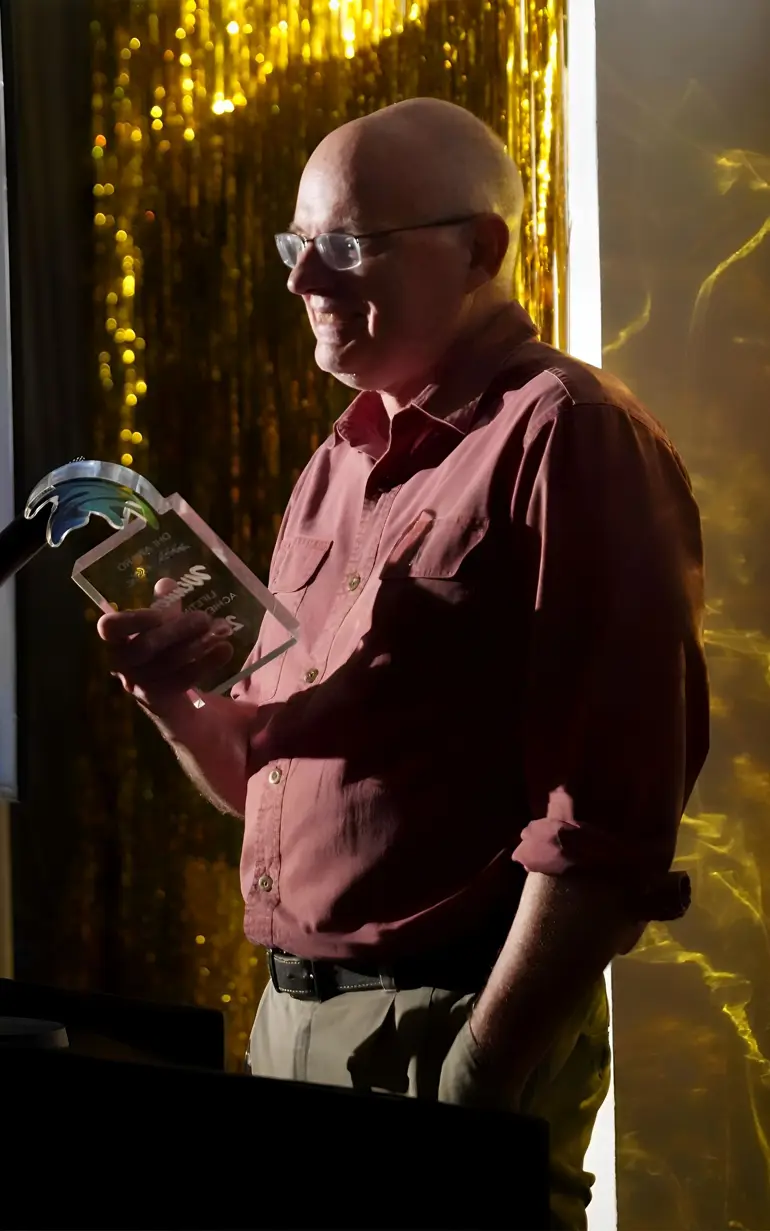
Tom Foster - 35 years strong: A story of dedication and success
In today’s DHI People, we chat with Tom Foster, Vice President of Marine & Coastal, Americas, about his career at DHI which has spanned 35 years to date.
A graduate of London’s Imperial College of Science and Technology, Tom Foster moved to Denmark in 1989 to join DHI as a junior engineer. He actually applied for a position in Water Resources but in a twist of fate ended up in Coastal Engineering. In 1997, he travelled to Kota Kinabalu (KK), Sabah, Malaysia to manage DHI’s first major international shoreline management project. In 1998, Tom and the growing Malaysian team converted the success of this project into one of DHI’s early international offices. In 2003, with growing DHI activities in Singapore, he opened the Singapore office amidst the geopolitical dispute on cross-border environmental impacts of reclamation between Malaysia and Singapore. Tom is the only one in DHI’s history who has served as Managing Director in three locations, having started the Malaysia and Singapore offices from scratch and helmed the US office since 2015, where he continues to lead today.
Hi Tom, we hope your memory serves you well … what made you decide to join DHI in 1989?
Back then, my university professor in the UK suggested I apply to DHI as he believed there would be better opportunities than joining another company in the UK. I dropped an application to the Water Resources department because my Master thesis was about river morphology. I didn’t realise (this is pre-internet job postings) that the job I applied for required 20 years of experience and obviously I had zero, so they sent me to the Coastal Engineering department which was looking for a junior engineer. When I hit my 20th anniversary, I was finally qualified for the job that I applied for!
What has been the highlight of your career so far?
I think the professional highlight of my career was when I was project director for the joint ITLOS study carried out for the Malaysian and Singapore governments in 2004, on impacts arising from the Pulau Tekong and Tuas View land reclamations. This is one of the most comprehensive marine impact assessments of reclamation works ever carried out. It was an amazing team of technical staff that delivered what would normally be three years’ work in nine months. The fact that this work went to the International Tribunal on the Law of The Sea and resolved an international dispute is something that I am extremely proud of.
What has been the most rewarding aspect of your career at DHI?
DHI is an amazing company and the work we do is often pioneering and that’s what keeps the job really interesting. For example, we’re just wrapping up a project where we’ve been looking at the effect of natural venting gas through the seabed and how it impacts the morphology around pipelines and offshore structures, not something that you can find in a textbook! Just to have the ability to constantly learn, even after 35 years, is amazing.
Many of our projects are important globally and really support sustainable development either directly or through minimising environmental risk and pushing the boundaries of the models and our understanding is really rewarding. That’s just been my career the whole way through. Every year, we get something that is super interesting and important to solve. DHI is one of the few companies with that level of challenge in the engineering or environmental field. Every day is interesting. To have the opportunity to contribute to this over the years is incredible.
How do you envision the future of DHI, and what advice would you give to newer employees?
I think the future is extremely bright. Many of the world’s problems are related to water and the environment and these problems will only accelerate as a result of climate change and population growth. Seen from the business perspective, we’re in the right industry at the right time. Perhaps more importantly, I’ve been through many DHI strategies and this one is clear and importantly focused on what I believe are the right problems that we should be solving as DHI.
One of the nice things that I’ve seen with the DHI+ strategy is the recognition that we are a knowledge-based company and thus staff development and retention is a priority. Our staff are the key to our business, and now we've got a focus on building their expertise. Ultimately, this means more people will stay for longer and build that knowledge base.
DHI is a company that lives on the skillset of our people, so it's a company where you can and should have a long career so it's really encouraging to see that we're refocusing on our staff and also getting people to move around the organisation, getting out to meet colleagues from around the world through the global mobility scholarship and project work. There are very few companies that offer such opportunities.
My advice to newer colleagues? Step up, find and take those opportunities that are available and then you can learn. Knowledge is key and you gain that knowledge by getting involved in the cool projects that we do.
'Every year we get something that is super interesting and important to solve. DHI is one of the few companies with that level of challenge in the engineering or environmental field. Every day is interesting. To have the opportunity to contribute to this over the years is incredible.'
Tom Foster, Vice President of Marine & Coastal, Americas
